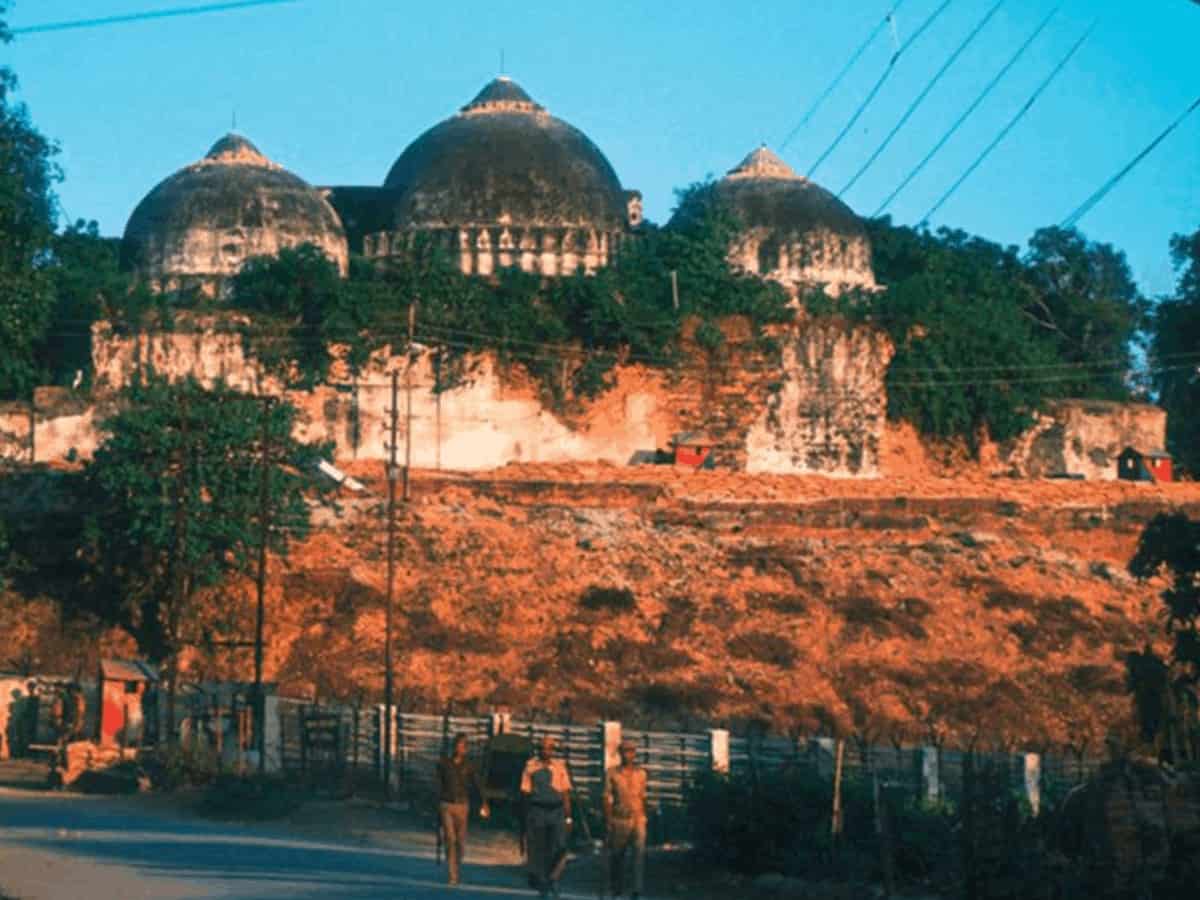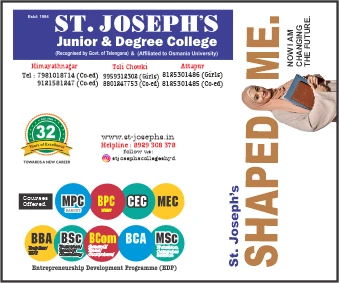
The Muslims who grew up after December 6, 1992 are often in a state of dilemma as to whether it was the alleged inept handling of the Babri Masjid dispute by the Babri Masjid Action Committee, then led by Sultan Salahuddin Owaisi (Asaduddin’s father) or the movement launched by the Muslims in 1985-86 against the Supreme Court recommendation for the Uniform Civil Code which facilitated the growth of Hindutva movement in late 1980s. They get further perplexed by the repeated statements by Bharatiya Janata Party bigwigs on its implementation. Only recently the Centre told the Supreme Court that it would soon implement UCC at the national level.
The 1985 protest was somewhat erroneously dubbed as the Shah Bano movement by the Press then, which was unlike now, dominated by the secularists, socialists and Communists—though the presence of rightists too was palpable in the government-run media establishments. The Hindutva elements were mostly confined to Doordarshan, All India Radio and a couple of news agencies because they were reportedly appointed at the time when Lal Krishna Advani was the information and broadcasting minister between 1977 and 1979, that is during the Janata Party government of Morarji Desai.
Left’s latest stand on UCC
Curiously, 40 years later the much-weakened Left parties have now softened their stand on Uniform Civil Code and are instead blaming the ruling Bharatiya Janata Party for thrusting it on the Muslims. The truth is that they were in those years of Indian politics the real champions of the UCC. The BJP which was not a powerful force then only used to raise this issue as it was another stick to beat the Muslims.
Actually, the movement by Muslims in 1985 had little to do with any individual—read Shah Bano then—but more to do with the apex court ruling in favour of the Uniform Civil Code. The Supreme Court on April 23, 1985 asked her ex-husband Mohammad Ahmad Khan, himself a lawyer of Indore, to pay maintenance of Rs 500 per month to Shah Bano who was reportedly disowned by him in 1975 at the age of 62, that is 43 years after the married life. When Shah Bano moved court her husband divorced her. It was three years later in 1978 and had paid her dain mehar (dower) of Rs 3,000. She moved the High Court which asked Khan to pay alimony.
Upon this Khan approached the Supreme Court, which also ruled in favour of his ex-wife and asked him to pay maintenance and even recommended implementation of a Uniform Civil Code.
While Muslim leadership in general opposed the ruling, in particular the reference of UCC, and mobilized the masses, the secular elements among them openly opposed it and called the judgement a landmark one. They were whole-heartedly backed by the Left-leaning public opinion makers, some film personalities and celebrities, feminists and civil society groups.
If objectively analysed from hindsight, it can be said that the Babri Masjid Action Committee perhaps failed to read the ground reality and could not anticipate as to how the Sangh Parivar used this issue to consolidate and bounce back to the centre stage of politics. In contrast, the so-called Shah Bano movement was an internal matter of the Muslim community, which has been peacefully protesting against the Supreme Court’s stand on the Uniform Civil Code.
Muslim viewpoint
The viewpoint of the Muslims was that the provision of maintenance after the expiry of iddat period of about three months of divorce is against the Shariat. They also argued that Shah Bano was financially not so helpless a woman who had five children in her custody as it was being projected by the secularists and feminists in the media and civil society groups. If it was financially not sustainable for Shah Bano to survive she would not have spent thousands, maybe lakhs of rupees, fighting cases for 10 years from district court to High Court and then Supreme Court.
As she had got divorced after 46 years of marriage her children were grown up and would have easily taken up the expenditure of their mother. Muslims pleaded that it was against the dignity and the self-respect of a woman to accept money from the man who had disowned and divorced her.
In contrast, the journalists and feminists deliberately ignored that in Islamic law only the ex-wife is not entitled to get maintenance. Otherwise, the ex-husband is bound to bear all the expenditure of the children till they grow up and stand on their own—in case of daughters married off. The ex-wife can even demand money for the breastfeeding of the child from the ex-husband. But in the case of Shah Bano this
does not arise as her children were grown up.
In Islam, the divorced woman and widow can marry again after the expiry of the iddat period of three months. While the Left and BJP were quite ‘sympathetic’ towards divorced women, they have no solution for the widows, whose number are many times more in the society.
What is happening everywhere is that, because of fear of paying maintenance, males are deserting their wives and no law is coming to the rescue of the latter.
Hindus not affected
Unlike the Babri Masjid issue, an average Hindu was not affected by this development. In fact, many of them accepted and even appreciated the point of view of Muslims—this included the then-Prime Minister Rajiv Gandhi, whose government enacted a law in this regard. So when The Muslim Women (Protection of Rights on Divorce) Act, 1986 was passed on May 19, 1986 the then minister in the Rajiv Gandhi cabinet, Arif Mohammad Khan, immediately resigned in protest. He accused his own Prime Minister of bowing down to the Muslim fundamentalists.
It is pertinent to note that Arif Mohammad Khan was then the the hero of Leftists and secularists, and not Bharatiya Janata Party as he is now. The media then went the whole hog in charging Rajiv Gandhi with pleasing both the Muslim and Hindu communalists. But was it really so? At that point of time his Congress party had the highest number of MPs ever in Indian history, 414 in the Lok Sabha. The Bharatiya Janata Party was down in the dump with only two seats in parliament and was not in power in any state. Contrary to this, the Communists were in power in West Bengal and Tripura and a major player in Kerala, where they are still in power.
Good reason to be confused
The post-1992 generation has reason to be confused. That was because of another development related to Babri Masjid, which was certainly a bone of contention between Hindus and Muslims since the mid-1850s. The situation took another turn after the February 1, 1986 judgement by the district court of Faizabad, which ordered the unlocking of the mosque. Muslim leaders reacted sharply to it and organized public meetings in this regard. Initially, the response of Hindus were somewhat muted, but the Vishwa Hindu Parishad, which has been demanding the restoration of at least 3,000 mosques to mandir, took up the matter. Yet, the common Hindu was not so attracted till 1989 when the BJP decided to mobilize them ahead of the Lok Sabha poll in November.
Distortion of facts
The distortion of facts in the latter years started from this very point, and for this the secularists as well as Muslim leadership both are responsible. The saffron brigade only capitalized on it. The Leftists, who were the main opposition then, started spreading the narrative that Rajiv Gandhi first pleased the Muslims by enacting a new law but then to please the Hindus got the Babri Masjid unlocked.
This propaganda continues till now. A renowned legal expert belonging to the Muslim community, in his YouTube channel highlighted this very line. But when I, through an e-mail, drew his attention that you are wrong as the court ruling came on February 1, 1986 and the law was enacted on May 19, and not the other way round as you mentioned. Besides, there was no reason for Rajiv Gandhi to indulge in the
balancing act as he was powerful and BJP was nowhere in the picture. This legal luminary was honest enough to apologize for his mistake.
In the initial years, Rajiv did try to improve the image of the Congress party by signing agreement with Akali Dal leader Harcharan Singh Longwal to bring peace in Punjab, with Laldenga of Mizo National Front and signing the Assam Accord with All Assam Students’ Union on August 15, 1985. Conceding to the demand of Muslims on the issue of maintenance was another such feat for which he was hailed by Muslims.
Arun Nehru’s role
Here it needs to be mentioned that Rajiv Gandhi’s minister of state for internal security, Arun Nehru, had a role in the unlocking of Babri Masjid. In fact, according to Mani Shankar Aiyar’s book, Rajiv was disturbed over this development and after an internal inquiry he dropped Arun Nehru from the cabinet in October 1986.
It needs to be mentioned that both Nehru and Arif Mohammad Khan joined V P Singh’s Janata Dal and became ministers in his cabinet. In the later years, they joined the BJP.
A weak Rajiv
It is also true that by late 1989 Rajiv Gandhi became quite weak because of the Bofors issue raised by V P Singh and the media campaign against him. The BJP fully exploited this situation and its patriarch Lal Krishna Advani launched his Ramshila Puja campaign which vitiated the communal atmosphere all over India, sparking large scale riots in Bhagalpur and other towns in Bihar.
The bloodbath in Bhagalpur started on October 24 whereas the Lok Sabha election was due on November 22 and 26. Rajiv, along with Bihar CM Satyendra Narain Sinha, rushed to Bhagalpur but the government failed. As if that was not enough, on November 9 the Sangh Parivar laid the foundation stone of Ram Mandir in Ayodhya. Kameshwar Chaupal, a Dalit from Supaul district of Bihar, laid the first brick collected from all over India. The BJP was fully aware that with the election just 13 days ahead no government could prevent this initiative.
Cornered Rajiv was now compelled to launch his election campaign from Ayodhya and promise Ram Rajya.
It may be that Rajiv lacked political acumen and committed mistakes, but he at least took some steps to end the Babri Masjid dispute. He failed but did not remain a silent spectator as his successor Congress Prime Minister Narasimha Rao did on December 6, 1992. Famous legal luminary and writer A G Noorani called Narasimha Rao the ‘prime culprit’ while Mani Shankar Aiyar dubbed him as the first Prime Minister of the Bharatiya Janata Party. V P Singh called for his trial while another former PM Chandrashekar and several of Rao’s cabinet colleagues accused him of being hand in glove with the BJP.
What the upcoming generation needs to be informed that All India Majlis-e-Ittehad-ul-Muslimeen chief was then charged with having a cosy relationship with Rao also from Hyderabad. AIMIM got split on this issue and Majlis Bachao Tahreek came up immediately after the demolition of Babri Masjid. Its own leader in the Andhra Pradesh Assembly Amanullah Khan accused Salahuddin Owaisi of remaining silent after the demolition. He was thrown out of the party.
In 1994 Assembly election of the then undivided Andhra Pradesh the AIMIM could win only one seat (that is by Asaduddin Owaisi) while Majlis Bachao Tahreek two. This is simply because Muslims of Hyderabad felt that the then AIMIM chief led the community down on the issue of Babri Masjid. The Telugu Desam Party of N T Rama Rao swept the poll.
Salahuddin’s son Asaduddin broke a long relationship with Congress in November 2012, that is when Narendra Modi was emerging as the prime ministerial face of the BJP.
To remove the image of being soft towards Congress at the time of demolition of Babri Masjid Asaduddin seeks to criticise the Grand Old Party more sharply than the BJP. But he singles out Rajiv for whatever had happened. However, he has now started flaying Rao too, at least for public consumption.



